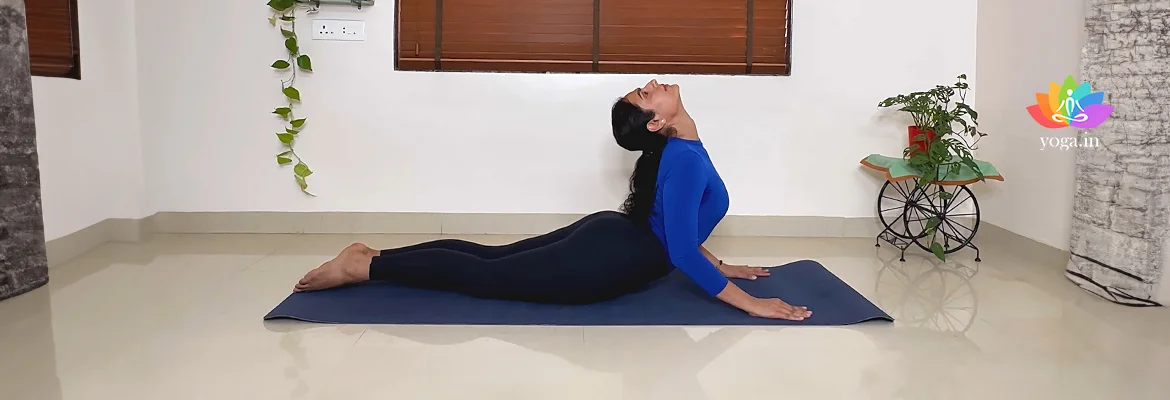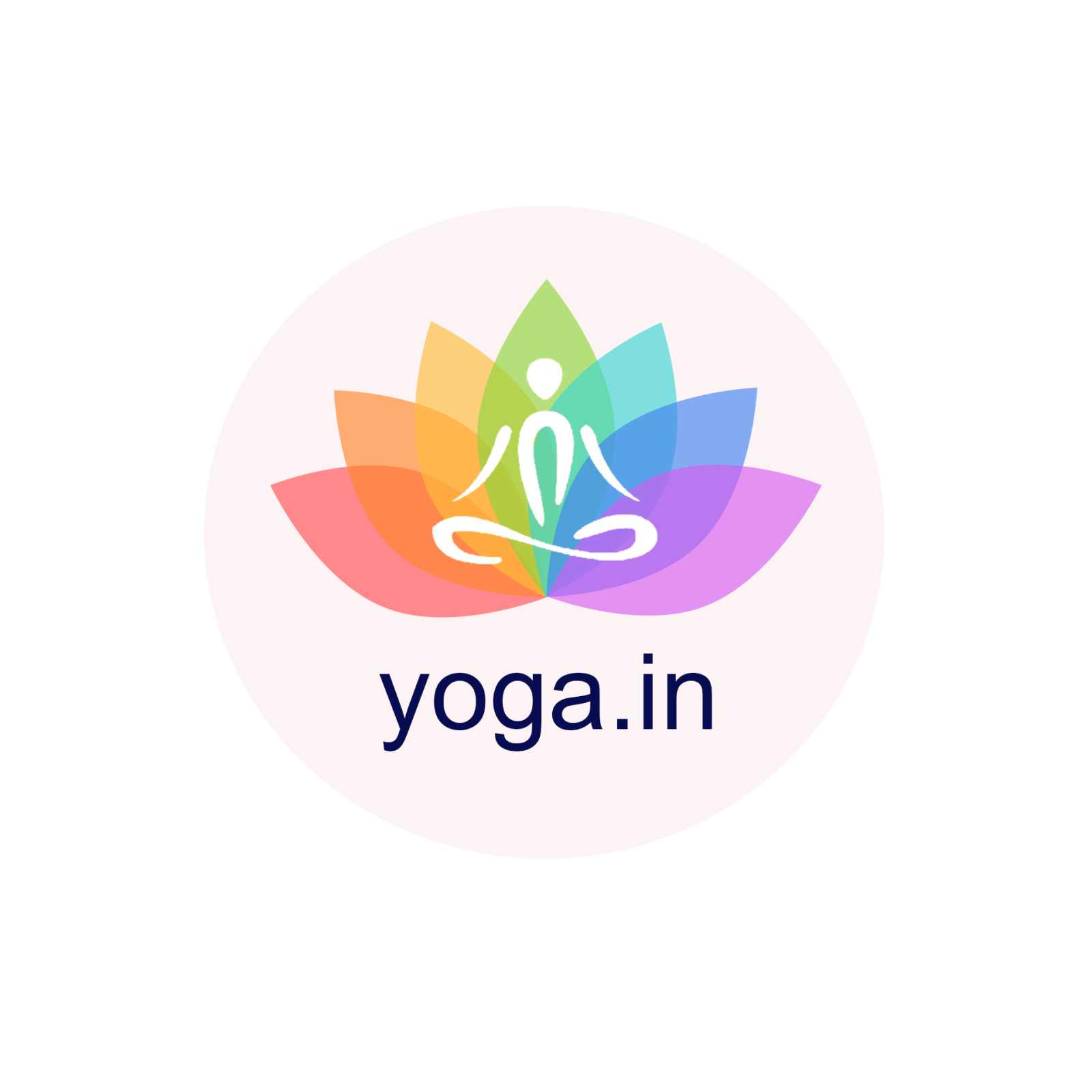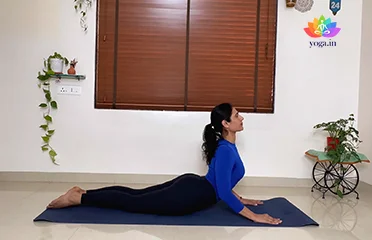Lie down flat on your stomach, keeping your hands by the sides of the thighs.
Introduction to the Asana
The Sanskrit name is derived from Bhujanga (भुजंगा) meaning cobra or snake and āsana (आसन) meaning posture or seat. The pose resembles a serpent about to strike.
Step to get in the pose
-
-
Your legs should be placed together, with your knees tight and toes pointing outwards.
-
Now, slowly bend your hands at the elbows, then place your palms on the floor to the sides of your shoulders.
-
Next, bring your chin forward, position it on the floor, and gaze straight ahead.
-
Now, slowly raise the head, neck, and shoulders and gradually the trunk with the support of your hands, until only the pubis is in contact with the floor.
-
While raising, inhale to the count of 1 to 3.
-
Contract the buttocks and tighten the thighs.
-
Try to raise the chin as high as possible, as your back arches.
-
Then slowly lower yourself back down to the ground, beginning from the trunk, upper part of the navel region, chest, shoulder, and chin; and finally placing the forehead on the floor.
-
Place the arms and hands by the sides of the thighs and relax.
Common mistakes and pitfalls
-
Wrong placement of the hands.
-
Locking the Shoulders.
-
Lifting the hips.
-
Crunching the low back.
Benefits
-
Soothes sciatica Pain.
-
Reduces effects of Asthma
-
Decreases the stiffness of the lower back.
-
Improves digestion.
-
Improves the vital capacity of your lungs.
-
Rejuvenates your heart.
-
Stretches muscles in the chest, shoulders, and abdominal area.
-
Strengthens your arms and toughens your shoulders.
-
Replenishes energy.
-
Relieves stress and enhances mood.
Contraindication
-
Avoid in case of abdominal surgery.
-
Avoid if suffering from ulcer, hernia, spondylitis, hypertension & heart ailments.
-
Avoid in case of pregnancy and severe lower back problems.
-
Avoid if suffering from carpel tunnel syndrome.




